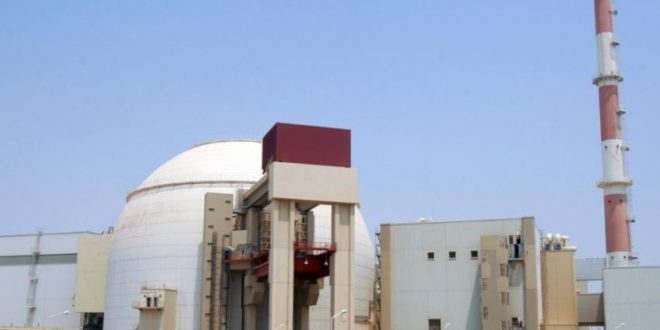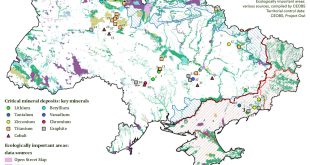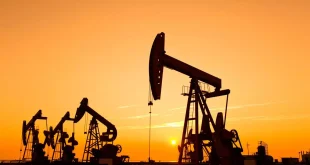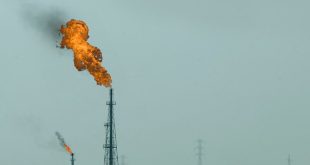Development of electricity generation capacities in nuclear power plants is a goal of Ebrahim Raisi, and the Darkhovin site is one, in this regard, to be able to compensate for Iran’s electricity shortage.
Despite its vast oil and gas resources, Iran has not been able to play a significant role in the energy market. Before the revolution, Iran had also planned to build a nuclear power plant. Thus, after the revolution, the plan to build the Bushehr nuclear power plant was pursued, and finally, in 2011, the first phase of the Bushehr power plant was put into operation, despite numerous delays by Rosatom. Iran faces significant electricity shortages due to sanctions and mismanagement, as well as drought and delays in the development of new power plants, especially renewable sources.
It should be noted that despite Iran’s billion-dollar investment in the nuclear program, the amount of electricity generated at the Bushehr power plant has not been able to play an important role in Iran’s energy security. In March 2021, Ali Akbar Salehi, the Assistant to the President of Iran and former Chairman of the Atomic Energy Organization, stressed that the total budget of the Atomic Energy Organization of Iran for the past 30 years has been $6.5 to $7 billion, or $250 million per year, as reported by former President Mahmoud Ahmadinejad. On May 11, 2018, it was revealed that Iran’s nuclear activities had cost the country more than $30 billion. Meanwhile, according to Ali Reza Namvar Haghighi, the cost of the nuclear program for Iran was $2 trillion.
The Bushehr nuclear power plant had less than 4.4 TWh of electricity production in 1400, which has decreased by more than 41 percent compared to 2017. According to official statistics from Fars News Agency, the Bushehr power plant has always had a decreasing trend since 1996. The Bushehr plant was inactive for what the Islamic Republic called “necessary repairs” from February 2020 to June 2021, and Iranian officials have not stated the reason. Eshaq Jahangiri, the former first vice president of Iran, had previously estimated the cost of building the 1,000-megawatt Bushehr plant at $8.5 billion. It has generated about $5 billion worth of electricity. The plant, which was commissioned by Russia’s Rosatom after a two-decade delay, accounted for less than 1.5 percent of Iran’s electricity generation last year.
Although Iran has not been able to fully utilize the capacity of the Bushehr nuclear power plant to supply electricity, the head of Iran’s Atomic Energy Organization announced Tehran’s decision to build a new nuclear power plant in Darkhovin, Khuzestan Province, last week. Khuzestan Province has vast oil and natural gas resources. According to Mohammad Eslami, the head of the Atomic Energy Organization of Iran, in the past few years, the use of the Bushehr nuclear power plant has saved 80 million barrels of oil. Development of electricity generation capacities in nuclear power plants is one of the goals of the government of Ebrahim Raisi, and the Darkhovin site is one of the sites, in this regard, to be able to compensate for the country’s electricity shortage. According to Ali Khamenei ‘s emphasis on the production of 17,000 megawatts of electricity in the country through nuclear energy, the production of 10,000 megawatts was considered in the budget.
In the process, Iran is planning to use more nuclear energy to build the 360-megawatt Darkhovin power plant. This project will be an all-Iranian power plant, which is included in the development plan along with the research reactors required by the organization.
The construction order was issued in February last year in such a way that stream generation, for the ability to produce all-Iranian power plants in the country’s industrial capacity as a driving force, will be considered by other industries. The government spokesperson said that a comprehensive document on the development of the nuclear industry would be unveiled on April 10.
Bahadori Jahromi said that in the celebration of this year, a comprehensive document on the development of the nuclear industry would be unveiled in the presence of the President.
It should be noted that, in 2008, it was stated that the design of the Darkhovin nuclear power plant would take six years, and the design of this plant was to be completed in 2012, based on the “Development Vision Document and the Law on Achieving Peaceful Nuclear Technology”. In the long run, Iran is responsible for generating 20,000 megawatts of electricity through nuclear power plants.
Since the design and construction of the Darkhovin power plant was not done as expected, in 2016, one year after the signing of the nuclear agreement, Ali Akbar Salehi, the former head of the Atomic Energy Organization of Iran, said that the regime decided to pursue a project to build nuclear power plants after the war. But this time, one that would be self-reliant. When it came to building power plants, Iran was finally supposed to have eight nuclear power plants, with a share of about 85,000 MW over a 15-year vision. That means 8 to 10 percent of electricity generation should be nuclear.
Mohammad Eslami said that the Islamic Republic could produce nuclear fuel inside the country and would soon start using it at the Bushehr nuclear power plant. Last year, when Iran announced that it had increased enrichment above 20 percent, Rafael Grossi, the Director-General of the International Atomic Energy Agency, called 20 percent uranium enrichment “extremely sensitive” in an interview with a Japanese newspaper. Weapons become easier. In the uranium enrichment industry, the more centrifuges there are, and, of course, the more modern the centrifuges are, the faster they enrich with less energy and the higher the enrichment capacity of the nuclear industry is. The Bushehr power plant has been shut down several times in recent years. In some cases, Russia has stopped generating electricity for 3 to 4 months due to repairs. Last year, financial problems were also the reason for the shutdown of the Bushehr power plant. It has not been able to meet its needs. The question is, with what domestic technology is Iran trying to build a native nuclear power plant in Darkhovin?
In February 2020, Mahmoud Jafari, the Deputy Director of the Atomic Energy Organization of Iran and the CEO of the Atomic Energy Production and Development Company, announced the possibility of shutting down the Bushehr nuclear power plant in 2021, citing restrictions on currency transfers and banking sanctions. In recent months, due to the shortage of natural gas in the national grid, the country was facing many problems in the field of electricity and gas supply. Last September, Oil Minister Javad Owji announced a daily shortage of 200 million cubic meters of gas in winter. It should be noted that many power plants in Iran use natural gas as fuel. The Bushehr nuclear power plant was expected to be able to compensate for part of the electricity shortage in the national grid last year. Although the reason for the reduction in power generation capacity of this power plant was not officially announced, the Bushehr power plant was shut down and was inactive at various intervals, for example, from February 2020 to June 2021, for what the Islamic Republic declared “necessary repairs”.
The promise of building the Darkhovin nuclear power plant contradicts the potential of Iranian companies. The Iranian government can reduce its dependence on fossil fuels to generate electricity by investing more in renewable energy. The Islamic Republic can change its foreign policy and sign a nuclear agreement or even use European companies to build nuclear power plants. The power plant, the design of which has been delayed for more than 15 years, will face a long delay in its construction, and these delays will cause great damage to the Iranian economy.
www.menaaffairs.com





